Potřebujeme váš souhlas k využití jednotlivých dat, aby se vám mimo jiné mohly ukazovat informace týkající se vašich zájmů. Souhlas udělíte kliknutím na tlačítko „OK“.
ASTM E2691-11
Standard Practice for Job Productivity Measurement
Automaticky přeložený název:
Standardní praktiky pro měření produktivity práce
NORMA vydána dne 1.11.2011
Informace o normě:
Označení normy: ASTM E2691-11
Poznámka: NEPLATNÁ
Datum vydání normy: 1.11.2011
Kód zboží: NS-45877
Počet stran: 21
Přibližná hmotnost: 63 g (0.14 liber)
Země: Americká technická norma
Kategorie: Technické normy ASTM
Kategorie - podobné normy:
Anotace textu normy ASTM E2691-11 :
Keywords:
accounting, agile, agile construction, construction accounting, construction production, construction productivity measure, construction put in place, cost codes, CPIP, effectiveness, efficiency, individual productivity, job labor variance, job layout, job productivity, job productivity assurance and control, job productivity measurement, job tracking, JPAC, JPM, labor productivity, labor variation, lean, lean construction, low cost provider, observed percent complete, planning
Doplňující informace
| Significance and Use | ||||||||||||||
|
JPM produces two measurements: construction production rate and productivity. JPM measures the overall production rate by comparing CPIP to the time elapsed in the construction schedule. JPM measures overall job productivity through a comparison of labor usage to a reference point. JPM issues early warning signals for construction. JPM identifies productivity deviations in the form of any gains or losses in productivity, and anomalies indicating a special cause, from the productivity reference point. JPM measures the productivity changes to individual building elements (according to the UNIFORMAT II format for organizing building data, in Classification E1557) with the same methodology used for overall job productivity measurement. JPM measures ongoing changes in labor usage. JPM measures productivity wherever the labor is used in construction by: Any contractor or construction manager directly or indirectly responsible for the productivity of the labor and its usage. Any contractor or construction manager conducting self performance on any portion of the construction job. Any contractor or construction manager supervising labor performance on any portion of a construction job. |
||||||||||||||
| 1. Scope | ||||||||||||||
|
1.1 Based on the UNIFORMAT II format for organizing building data, established in Classification E1557, and depending on the level where measurement is applied (industry, total job, or building element), JPM measures construction productivity at three levels: task, project, and industry (shown in Fig. 1). By comparing labor hours used against CPIP, JPM allows for unified measurement of established building elements (according to the UNIFORMAT II format. This practice establishes a process for measuring construction job productivity by comparing labor usage to CPIP. 1.2 JPM measures labor productivity of the installation processes on a construction job. 1.3 CPIP is measured with input from the labor performing the installation, utilizing elements of statistical process control (SPC) and industrial engineering. 1.4 JPM takes into account the difficulty of installation at any given point on a job. 1.5 JPM evaluates relative productivity changes using trend monitoring.
|
||||||||||||||
| 2. Referenced Documents | ||||||||||||||
|
Podobné normy:
Historická
1.7.2012
Historická
1.8.2013
Historická
1.8.2014
Historická
1.3.2014
Historická
1.12.2010
Historická
1.7.2013
Doporučujeme:
Aktualizace technických norem
Chcete mít jistotu, že používáte pouze platné technické normy?
Nabízíme Vám řešení, které Vám zajistí měsíční přehled o aktuálnosti norem, které používáte.
Chcete vědět více informací? Podívejte se na tuto stránku.


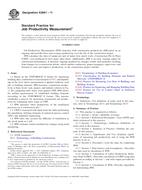
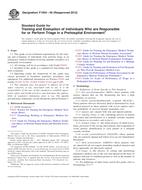 ASTM F1654-95(2012)..
ASTM F1654-95(2012)..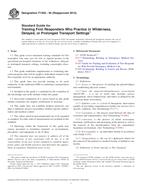 ASTM F1655-95(2013)..
ASTM F1655-95(2013)..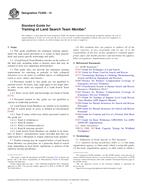 ASTM F2209-14
ASTM F2209-14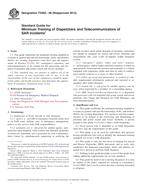 ASTM F2662-08(2014)..
ASTM F2662-08(2014)..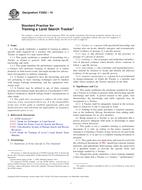 ASTM F2852-10
ASTM F2852-10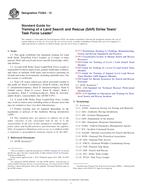 ASTM F3024-13
ASTM F3024-13
 Cookies
Cookies
